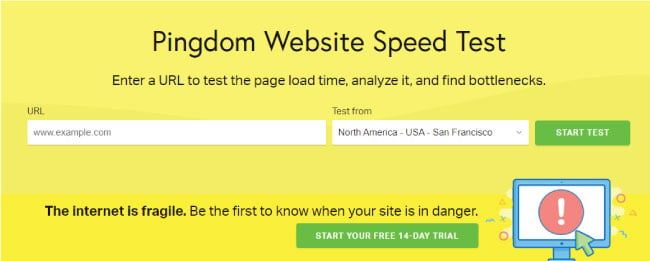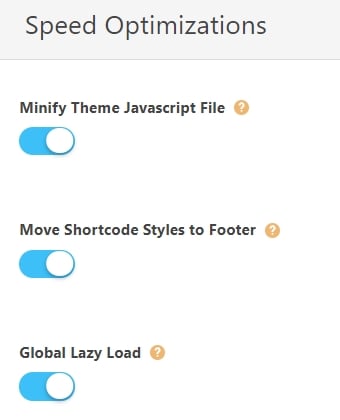Is your WordPress site making too many HTTP requests? Your page can load faster! Here are 8 ways you can reduce HTTP requests on your website.

Approximate read time: 8 minutes
Your website is slow.
Not only is it slow, but now you know that getting a faster site has something to do with HTTP requests.
This means you'll need to learn yet another new thing... And all this just to get your WordPress site off the ground!
Fear not, WordPress warriors! The Formidable blog is here for you — we've even done most of the work! You'll just need to execute these 8 easy methods. As this guide will show, it's actually not that hard.
Reducing the number of HTTP requests on your site will not only improve load times, but it will dramatically improve user experience overall.
Let's get to it! Faster page loading times are closer than you think.
What are HTTP requests?

Before we show you how to reduce them, it's important to know exactly what an HTTP request is. What do you know so far?
If you are here, you must know that HTTP requests are connected to page speed in some way. Kudos, you are correct. But there's a bit more to it than that.
To best understand HTTP requests, let's understand what happens when we visit a website in a web browser:
- You visit a website using a web browser.
- HTTP requests occur when your browser requests files to download.
- The website's server returns all the files needed to load the website.
- Once all the files have been loaded, you can view and interact with the site.
By now you might be realizing that this isn't very complicated in theory. The fewer HTTP requests a website has to make, the faster it can load.
So what can you do to reduce your WordPress site's HTTP requests? We've done the research and compiled 8 simple ways.
But before we count those down, let's understand the basic principles of HTTP requests:
More Files = More HTTP Requests
Bigger Files = Longer HTTP Requests
First, you want to reduce the number of files your site loads. This will, in turn, reduce the number of HTTP requests and result in faster loading times.
Next, you want to ensure that all the files on your website are as small as possible. Smaller files take less time to load and also result in faster site loads.
Do you see? It's all very straightforward. Fewer files and smaller files can help you with speeding up your site. Tracking your HTTP requests can actually give you great insights into how you can improve many aspects of your website.
Feeling confident? Soon your WordPress site will load faster than ever. But first, a test.
Test your site for HTTP requests

The easiest way to test how many HTTP requests occur on your WordPress site is with external tools.
There are a couple of options:
- Web tools like Pingdom or GTmetrix
- WordPress plugins like Query Monitor
If you use the web tool, all you need to do is click one of the links above and enter your URL to test your site.
After that, your website will be scanned... and voila! You can see how many HTTP requests there currently are.
You can also see a lot of other things. Truth be told, getting deep into your website's scan data can feel overwhelming.
Unless the curiosity is eating you alive, let's stay focused on today's goal of decreasing HTTP requests. Hang in there!
Reduce HTTP requests on your WordPress site
When thinking about site speed, technical SEO, and things like HTTP requests, it's perfectly natural to feel apprehensive about getting started.
Nevertheless, we can honestly say that we think the average WordPress user can handle everything on this list.
Here's how you can chip away at your HTTP requests:
- Combine CSS & Javascript
- Minify code (HTML, CSS, Javascript)
- Enable lazy load
- Remove unneeded images
- Reduce image file size
- Disable unneeded plugins
- Reduce external scripts
- Use a CDN
1. Combine CSS & Javascript
One way to reduce HTTP requests is by combining multiple CSS and Javascript files.
If you have no idea how to work with CSS and Javascript, don't freak out! There are easy ways to do this that don't require adjusting your CSS file manually.
For starters, many WordPress caching plugins have this feature. That means you would just need to install the plugin and enable the correct settings to combine CSS and Javascript files.
What's more, many modern WordPress themes include this feature! Just take a look at your theme options to see if the setting exists.

Did you know?
Formidable Forms does the hard work for you! Our form builder plugin reduces HTTP requests by combining CSS and Javascript files!
2. Minify code (HTML, CSS, Javascript)
Are you still poking around in your theme options or that WordPress caching plugin? Good, because there is another option you might be able to find: Minification.
Let's first see how Wikipedia defines it:
Minification is the process of removing all unnecessary characters from the source codes... usually things like white space characters & comments... which are used to add readability to the code but are not required for it to execute.
So when you enable the minify setting in your theme options or caching plugin, that's what's happening! It's automatically trimming the unneeded fat in your website's code.
By minifying the code, it makes your site load faster by requiring fewer and shorter HTTP requests. This is a great trick, but it's no replacement for a cleanly coded website.
If your site is still dragging even after doing everything on this list, you might need to hire a developer to do a deeper dive into your code.
For the adventurous among us, it can be tempting to start digging around in your site's CSS and Javascript files. We strongly recommend you resist this urge!
If you make changes that end up breaking your site, you'll be in a much worse situation. Be careful out there.
3. Enable lazy load
You didn't leave your theme options section yet, did you? Good. Because there's one more setting there that can reduce HTTP requests. It's called lazy load.
Lazy Loading defers the loading of images that are not needed on a page immediately. Simply put, lazy load allows websites to load faster because it ensures only what is visible on-screen will be loaded initially.
So unless your users have the tendency of arriving at your site and scrolling up and down wildly, lazy loading could make your site considerably faster.
If your WordPress theme settings don't include lazy load, no worries. With WordPress core and a current browser, your site will include lazy loading automatically.

4. Remove unneeded images
Everyone loves a pretty picture. They are important at every stage of the customer journey.
Brightlocal found that 60% of consumers are more willing to consider a search result that includes an image. That means even before a customer lands on your website, images are important!
Nevertheless, it's always a good idea to trim extra images from our WordPress sites when possible. This becomes a little easier if you already follow the principle of less is more.
When it comes to HTTP requests and images, less is actually... less! As in, you'll reduce the number of HTTP requests on your site if you have fewer images.
5. Reduce image file size

This one couldn't be easier. Just make your images smaller! It takes less time to load smaller images.
Keep in mind that there's always a trade-off between image quality and file size. It can be tempting to reduce the file size as much as allowed, but if you do that, your images could end up looking a little bit low-fi.
With that in mind, here are a couple of easy ways to make your images smaller:
Change image-render settings: When rendering (saving or exporting) your image in Adobe Photoshop or Illustrator, be aware of the best settings for size and quality. If the image is a photo, go for a medium-quality jpg. If the image is a vector drawing, save it as a png.
Use a web service: Maybe you found an image that you want to use for your site. Perfect! Only one problem — it's huge! If you don't know how to use Photoshop, try a website like picresize.com.
6. Disable unneeded plugins
Having too many plugins on your WordPress site is something we talk about all the time at Formidable.
There are two things to consider when trying to reduce the number of HTTP requests on your site.
- The number of installed plugins
- The CPU load of installed plugins
Naturally, limiting the number of plugins is a great place to start. Deactivate and uninstall plugins that you are not using.

But here's another thing to consider. High CPU plugins can manifest a ton of HTTP requests. This is where the Query Monitor plugin can come in handy again.
Query Monitor allows you to check which plugins use the most resources. Very handy!
The general rules of thumb: avoid plugins that use external requests from other websites, run ongoing processes, or take a long time to load.
For example, social media plugins are notorious offenders because they rely on a connection between your site and a social site.
In fact, many social media plugins are going to be guilty of all three of the above-mentioned sins! Avoid them whenever possible.
Read more: Does Formidable use caching?
7. Reduce external scripts
An external script is something that pulls requests from other websites. You may not have thought about it, but external scripts are very likely running on your WordPress site.
Are external scripts bad? Not necessarily. They can help people do amazing things with their sites. It's just that having too many of them running on your site will lead to an increase in HTTP requests.
Here are some examples of external scripts that many WordPress sites are constantly running:
- Google (AdSense, Analytics, etc.)
- Embedded Videos
- Embedded Widgets + Posts
- Social Sharing Plugins
The truth is, there are workarounds that allow users to run external scripts while requiring fewer HTTP requests. But it gets technically demanding really fast.
But there is one non-technical thing you can do: try to limit external connections to only those that are absolutely necessary.
To do this, you can get creative in solving problems. For example, instead of using a Google Maps plugin, you could just take a screenshot of a map and post that instead.
A single image file is likely to require fewer HTTP requests than a plugin in almost every case. This kind of creativity can be applied all across your site to make it less dependent on external connections.
8. Use a CDN

CDN's are becoming more and more popular. And with good reason! They boost site speed, plus improve site reliability and SEO.
CDN stands for Content Delivery Network. It sounds complicated, but it's just a clever solution that optimizes how websites are loaded.
The way a CDN improves site speed isn't that complex. They work by delivering cached website content to users based on where the user is located geographically.
There are a few other factors involved, but for our purposes, we just need to know that CDNs can help our sites make fewer HTTP requests.
Luckily, because of the increased popularity of CDNs, they are becoming much more accessible to the average WordPress user. There are a bunch of great CDN options available like Stackpath (formerly MaxCDN) and Cloudflare.
A properly configured CDN can work wonders on site speed. One thing to note though: CDN's aren't free and usually cost around $10 per month.
Wrapping up
What a journey! By now, you must have reduced the number of HTTP requests on your website. Keep at it — site speed is a huge factor for SEO and user experience.
We hope you've found this article helpful, amusing, and concise. Until next time, happy WordPress everyone!
Read more from the Formidable blog
If you've got a ton of HTTP requests on your WordPress site, one way to reduce them is with great plugins. Formidable Forms takes advantage of nearly every speed-boosting technique in this guide!
What's more, Formidable Forms is optimized to handle your contact forms, subscriber forms, and testimonial forms. Why install 5 plugins when you could install one? Try Formidable free for 14 days and take control of your plugin directory!
 How To Create a Contact Form in WordPress In Under 3 Minutes
How To Create a Contact Form in WordPress In Under 3 Minutes How To Sell Services on WordPress [A Complete Guide]
How To Sell Services on WordPress [A Complete Guide] The Ultimate Guide to How To Build a WordPress Website
The Ultimate Guide to How To Build a WordPress Website
very nice information
Thanks 🙂
Wow thanks so much sir, i was able to reduce the HTTPS request on my website, you made everything so easy and simple.
God bless you.
Very glad it worked out so well for you!
Help full post
Great info. I needed this
Site speed is an issue that has more advantages when it comes to wordpress, but it is a hair-raising issue until the optimization is finished.
The topic was useful, I think I was able to optimize my site. Thanks
I have done all this and the site is running fast. but now i have a big problem: form submission is very slow. there is something my form submission block. or something else.
Hi Vin,
If you are running Formidable Forms, our support team would be happy to take a look and see if there is anything obvious that may be causing this issue.
Hi Ryan!
Thanks for sharing this helpful tips about reducing Http requests. We need it seriously.
We will try to apply these tips and see the difference after then.
Keep up the good work!
Best regards.
Thanks
Amazing tips and great information to know more about http requests
Thanks
Are there any known conflicts with certain plugins?
Great info!
This was so helpful! I was confused on how to get started but these tips were great!
This was really helpful. I always wondered how I can reduce http requests which tended to slow down my website. Thank you!
Great tips. The number of requests does impact on your website performance.